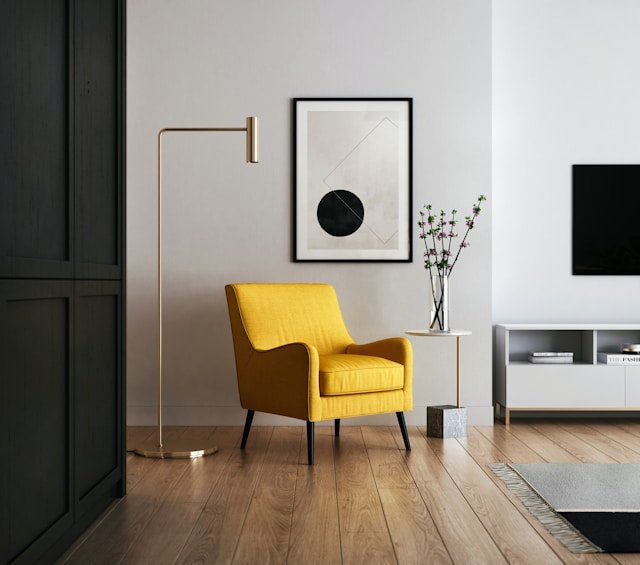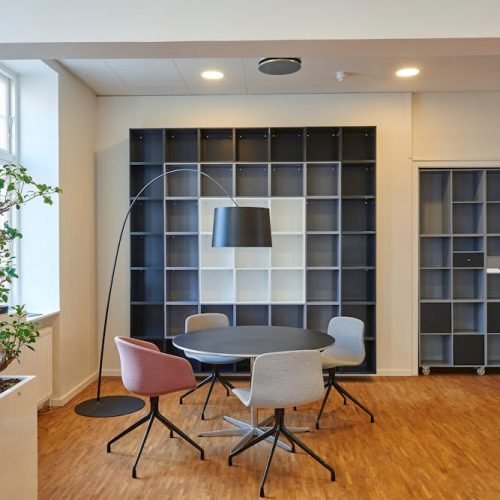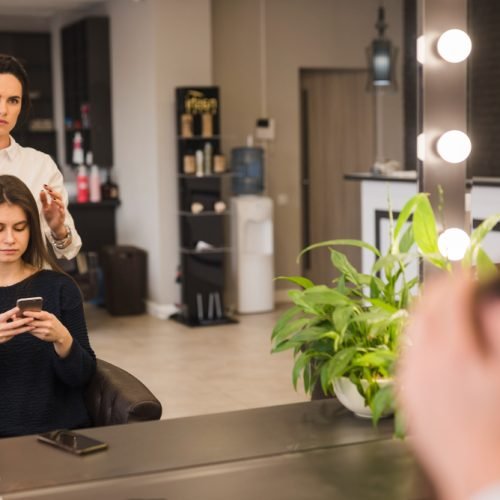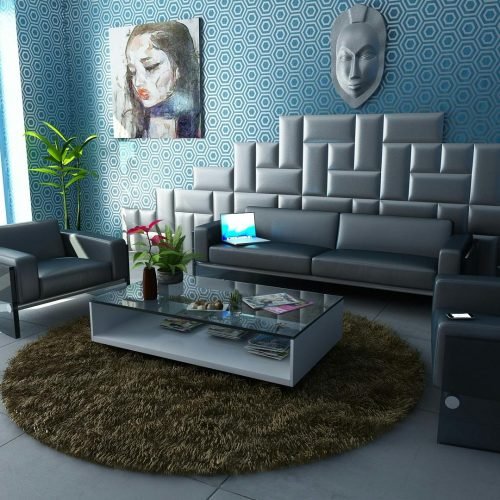Want to make your home look amazing? It’s not as hard as you think! With a few simple tricks, you can totally change how your space feels. This article will walk you through some easy interior design ideas to help you create a home you’ll love.
Key Takeaways
- Think about what each room is for and how you want it to feel.
- Pick colors that go well together and see how they look with your natural light.
- Arrange your furniture so it’s easy to move around and makes sense for the room.
- Use different types of lighting to make your space cozy and useful.
- Mix up textures and materials to add interest and depth to your rooms.
Defining Your Design Vision
Before you even think about paint swatches or furniture, you gotta figure out what you actually want. What’s the point of this room? How do you want it to feel? And how does it all fit together?
Understanding Room Purpose
What’s this room for? Is it a chill zone for watching movies? A home office where you need to focus? Or a dining room where you host epic dinner parties? The purpose of the room dictates everything else. A bedroom needs to be relaxing, while a home gym should be energizing. Think about the activities that will happen there and design accordingly. For example:
- Living Room: Socializing, relaxing, watching TV.
- Kitchen: Cooking, eating, maybe homework at the island.
- Bedroom: Sleeping, relaxing, getting ready.
Evoking Desired Emotions
Rooms aren’t just functional; they’re emotional spaces. Do you want your living room to feel cozy and inviting? Or maybe you want your office to feel calm and productive? Color, texture, and lighting all play a huge role in setting the mood. Think about how you want to feel when you’re in the room.
Consider the psychology of color. Blues and greens are calming, while reds and yellows are energizing. Use these principles to create the desired emotional atmosphere.
Ensuring Cohesive Results
This is where it all comes together. You don’t want a house that feels like a bunch of random rooms thrown together. You want a cohesive design that flows from one space to the next. This doesn’t mean everything has to match perfectly, but there should be a common thread – a color palette, a style, or a feeling – that ties it all together. Think of it like telling a story; each room is a chapter, but they all belong to the same book. For Sri Lankan modernity, consider blending minimalist principles with local craftsmanship. Use natural materials like wood and stone, and incorporate traditional Sri Lankan art and textiles in a subtle, contemporary way. This approach creates spaces that are both stylish and deeply connected to the local culture.
Mastering Color Palettes
Color palettes are super important in interior design. They set the mood and tie everything together. Picking the right colors can make a huge difference in how a space feels. For Sri Lankan modern life, think about how the colors work with the natural light and the overall vibe you’re going for.
Selecting Harmonious Hues
Choosing colors that go well together is key. Think about using a color wheel to find colors that complement each other. For a modern Sri Lankan home, consider incorporating colors inspired by nature, like greens and browns, or vibrant hues that reflect the local culture. It’s all about finding a balance that feels right for you.
Considering Natural Light
Natural light can totally change how a color looks. A color that looks great in the store might look different in your living room. For Sri Lankan homes, where you often get a lot of sunlight, it’s important to see how the colors look at different times of the day. Colors can appear warmer or cooler depending on the light, so test them out before committing.
Testing Color Choices
Before you paint an entire room, test your color choices. Paint a small area and see how it looks over a few days. This is especially important in Sri Lanka, where the light can be intense. Consider these points when testing:
- Paint sample boards and move them around the room.
- Observe the colors in both natural and artificial light.
- See how the colors look at different times of the day.
Testing colors might seem like a hassle, but it can save you from making a mistake you’ll regret later. It’s a small step that can make a big difference in the final result.
For a modern Sri Lankan vibe, think about using neutral colors as a base and adding pops of color with accessories. This way, you can easily change the look of your space without having to repaint everything.
Strategic Furniture Arrangement
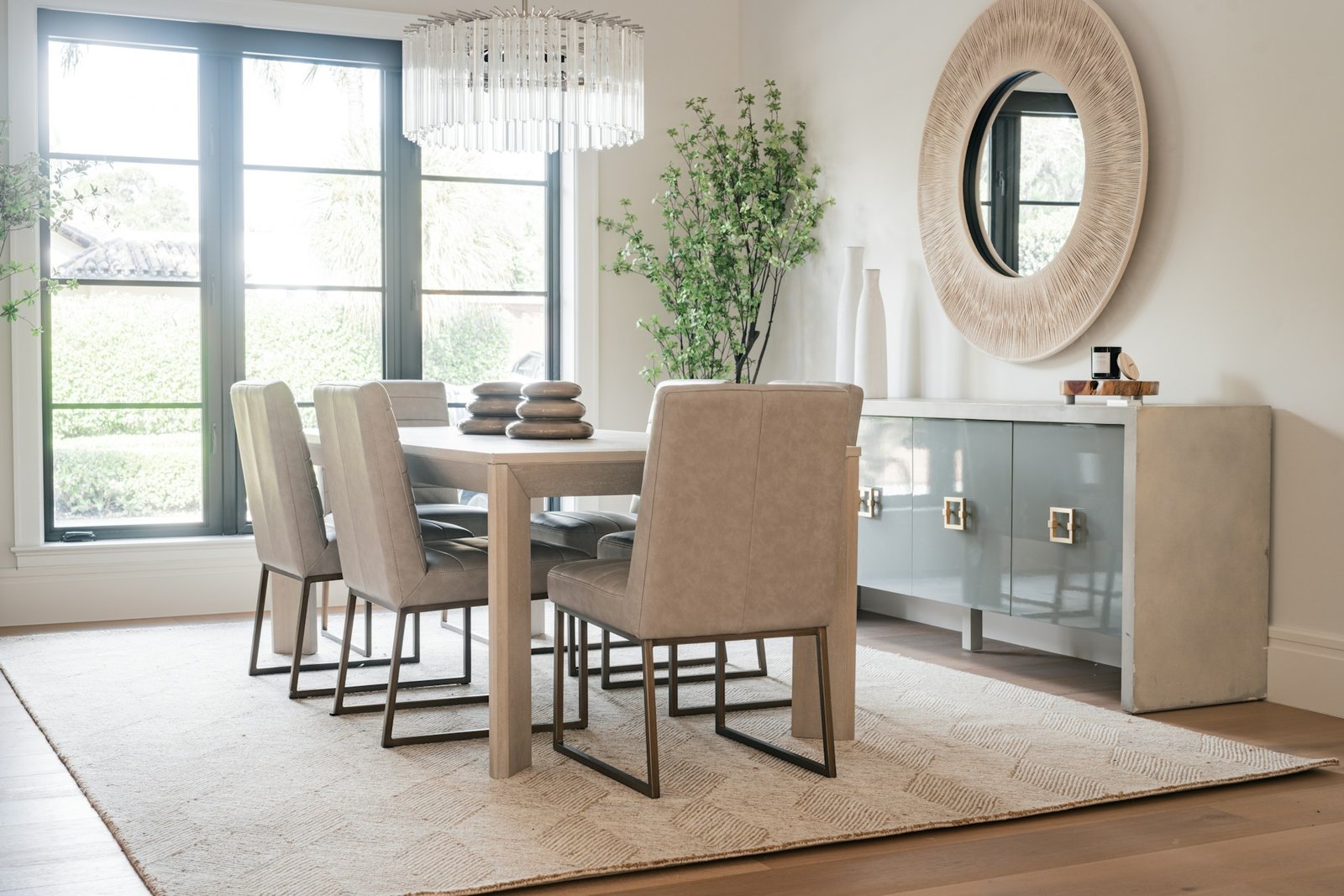
Furniture arrangement is super important. It can really change how a room feels and functions. Getting it right not only makes the space more usable but also makes it look better. For Sri Lankan modern life, think about how you actually livein the space. Do you entertain a lot? Is it a small apartment or a larger house? These things matter.
Maximizing Space Efficiency
Choosing furniture that fits the size of your room is key. Big stuff in a small room makes it feel cramped, while small furniture in a big room can make it feel empty. Think about getting furniture that does more than one thing, like ottomans with storage or sofa beds. These are great for smaller spaces. Also, before you buy anything, [measure everything properly](#0243]. You don’t want a couch that won’t fit through the door!
Optimizing Traffic Flow
Making sure people can move around easily is also important. You don’t want people bumping into things all the time. If you have an open space, use furniture to create different areas, like a dining area or a living area. You don’t need walls to do this. Here are some tips:
- Keep walkways clear.
- Arrange furniture to guide movement.
- Avoid blocking doorways.
Think about how you actually use the space. Do you need a clear path from the kitchen to the dining area? Or a cozy reading nook away from the TV? Plan your furniture arrangement around your lifestyle.
Creating Defined Zones
Every room should have a focal point. This is the thing that catches your eye when you walk in. It could be a fireplace, a cool piece of art, or even just a nice piece of furniture. Arrange the other furniture to point towards this focal point. For example, you could put your seating facing the fireplace. Adding some bold elements, like a cool light or a sculpture, can also help. Make sure there’s enough seating for everyone!
The Art of Lighting Design
Lighting is super important, but people often don’t think about it enough when designing a space. It really changes how a room feels and works. It’s not just about flipping a switch; it’s about creating an atmosphere.
Enhancing Ambiance and Functionality
Good lighting does two things: it makes a room look nice and it makes it useful. Think about it – a dimly lit living room feels cozy, while a bright kitchen is great for cooking. The right light can totally change the mood. For example, designer Tamara Honey connected the open-concept kitchen to its surrounding areas through lighting. “The lights serve a purpose as both working taskers while adding to the architectural and artistic ambience within the space,” says the designer. It’s about finding that balance between pretty and practical.
Utilizing Natural Light
Natural light is your best friend. Open those curtains and let the sunshine in! Keep windows clear and use light curtains if you need privacy. Mirrors are awesome because they bounce light around, making a room feel bigger and brighter. It’s a simple trick that makes a huge difference. You can design home lighting to maximize the natural light.
Layering Light Sources
If you don’t have much natural light, don’t worry! You can create layers of artificial light. Start with ambient lighting (like overhead lights), then add task lighting (like desk lamps), and finish with accent lighting (like wall sconces). Dimmers are great because you can adjust the brightness depending on what you’re doing.
Think of lighting like an outfit. You need a base (ambient), something functional (task), and something that adds personality (accent). It all works together to create the perfect look and feel.
- Ambient lighting: Provides overall illumination.
- Task lighting: Focuses light on specific areas for tasks.
- Accent lighting: Highlights features and adds visual interest.
Incorporating Textures and Materials
Interior design in Sri Lanka is evolving, blending traditional aesthetics with modern living. It’s not just about how things look, but also how they feel. Using the right textures and materials can really transform a space, making it more inviting and reflecting a contemporary Sri Lankan lifestyle.
Building with Neutral Foundations
Think of neutral colors as your canvas. They provide a calming backdrop that allows textures to truly shine. Soft whites, creams, and earthy grays work wonders. These colors reflect the natural light beautifully, which is especially important in Sri Lanka’s tropical climate. They also offer flexibility, allowing you to easily switch up accent colors and accessories as your tastes evolve.
Mixing Contrasting Textures
Don’t be afraid to play with opposites! Combine smooth and rough, soft and hard. For example, a sleek, polished concrete floor can be softened with a rattan fixture and a plush wool rug. Or, pair a linen sofa with cushions made from raw silk or handloom cotton. This contrast adds depth and visual interest, preventing the space from feeling flat or boring. Consider these combinations:
- Smooth concrete + rough-hewn wood
- Shiny metal + woven textiles
- Delicate silk + chunky knit
Adding Depth and Visual Interest
Textures and materials are key to creating a space that feels layered and inviting. Think beyond just paint and furniture. Consider incorporating natural elements like stone, wood, and plants. These materials bring the outdoors in, connecting the space to Sri Lanka’s lush landscapes.
Incorporating different textures is like adding spices to a dish – it elevates the entire experience. It’s about creating a tactile environment that engages the senses and makes you want to linger in the space.
Here’s a simple table to illustrate how different materials can impact a space:
| Material | Texture | Impact |
|---|---|---|
| Polished Wood | Smooth | Elegant, warm |
| Exposed Brick | Rough | Rustic, industrial |
| Handloom Cotton | Soft, textured | Comfortable, artisanal |
| Metal Accents | Sleek, cool | Modern, sophisticated |
By carefully selecting and combining textures and materials, you can create a home that is both stylish and uniquely Sri Lankan. Don’t be afraid to experiment and find what works best for you!
Creating Impactful Focal Points
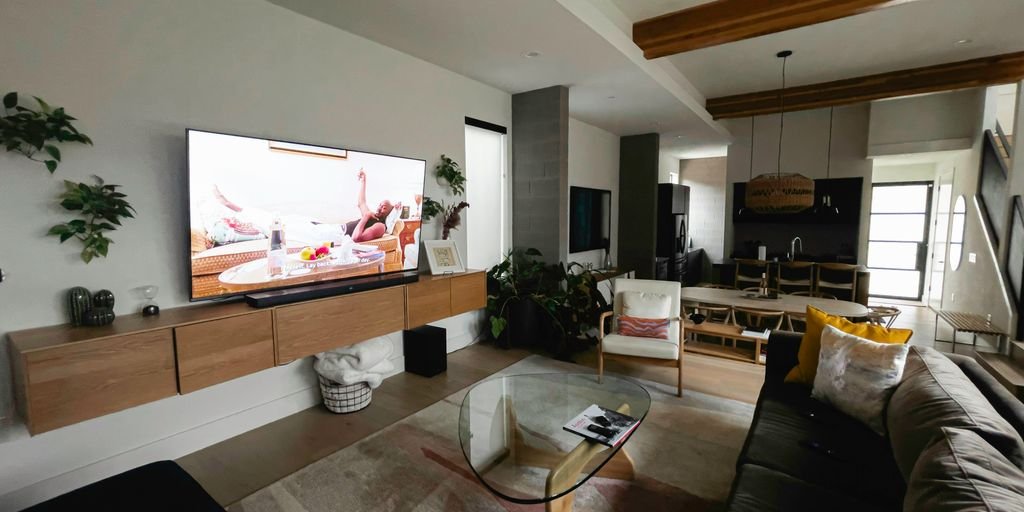
Think about those rooms that just grab your attention the second you walk in. A lot of that comes down to having a strong focal point. It’s that one thing that your eye is immediately drawn to, and it helps anchor the whole space. For Sri Lankan modern life, this could be anything from a striking piece of art to a beautifully crafted piece of furniture that reflects local artistry.
Identifying Key Features
First things first, what’s already there? Does your living room have a killer view? Maybe a cool architectural detail like an exposed brick wall? Or perhaps a cozy fireplace? These are all potential focal points just waiting to be highlighted. If you’re starting from scratch, that’s cool too! You get to decide what that ‘wow’ factor will be. In Sri Lankan homes, often the focus is on bringing the outdoors in, so large windows framing lush greenery can be a natural focal point.
Arranging Furniture to Direct Attention
Okay, so you’ve picked your focal point. Now, let’s arrange the furniture to really show it off. This is where things get interesting. Think about where you want people’s eyes to go when they enter the room. Angle your seating towards the focal point. Use rugs to define the space around it. It’s all about creating a visual pathway that leads the eye exactly where you want it to go. In smaller Sri Lankan apartments, this might mean strategically placing a statement chair or a vibrant textile piece to draw attention without overwhelming the space.
Adding Bold Elements
Sometimes, the focal point needs a little extra oomph. This is where you can get creative with bold colors, textures, and accessories. A large, colorful painting, a unique sculpture, or even a dramatic light fixture can do the trick. Just remember not to go overboard. You want the focal point to stand out, but not clash with the rest of the room. For a modern Sri Lankan touch, consider incorporating handcrafted items like a batik wall hanging or a set of vibrant, locally made ceramics.
Creating a focal point isn’t just about aesthetics; it’s about creating a sense of balance and harmony in your space. It’s about giving your eye a place to rest and appreciate the overall design. It’s a simple trick that can make a huge difference in how your home feels.
Achieving a Cohesive Interior Design
Establishing Flow Between Rooms
Okay, so you’ve got all these awesome ideas, but how do you make sure your house doesn’t feel like a bunch of random rooms thrown together? It’s all about creating flow. Think of it like this: each room should be a chapter in the same book. Use similar color palettes or decor themes throughout your home to establish continuity. For example, if your living room has a coastal vibe, carry some of those blues and sandy tones into the hallway or dining area. It doesn’t have to be matchy-matchy, but there should be a visual connection.
Layering Textiles for Warmth
Let’s be real, hard surfaces can make a place feel cold and sterile. That’s where textiles come in! Layering rugs, pillows, and throws adds texture and warmth, especially in living and sleeping areas. Think about mixing different materials – a chunky knit blanket on a velvet sofa, or a patterned rug over a sisal one. It’s all about creating a cozy and inviting atmosphere. Don’t be afraid to experiment with different patterns and textures, but try to keep the color palette consistent with the rest of the room.
Investing in Quality Pieces
When it comes to furniture, it’s better to have a few really good pieces than a bunch of cheap stuff that’s going to fall apart in a year. Focus your budget on high-impact, durable items like a statement sofa or dining table, and save on smaller decor items. A well-made sofa can last for years and become a focal point in your living room. Plus, quality pieces often have better design and craftsmanship, which can really elevate the look of your space. It’s an investment that pays off in the long run.
Think of your home as a reflection of your personality. It should be a place where you feel comfortable and inspired. Don’t be afraid to break the rules and experiment with different styles until you find what works for you. After all, it’s your space, so make it your own!
For Sri Lankan modernity, consider these design types:
- Minimalist: Clean lines, neutral colors, and functional furniture. Perfect for smaller spaces and busy lifestyles.
- Tropical Modern: Incorporates natural materials like wood and rattan, with pops of vibrant colors inspired by the island’s landscape.
- Mid-Century Modern: A timeless style with sleek furniture and geometric patterns. Adds a touch of sophistication to any home.
Bringing It All Together
So, there you have it. Making your home look great isn’t just about picking out pretty things. It’s about making choices that fit your life and how you use your space. Think about what you like, what makes you feel good, and what works for your everyday. When you put thought into these things, your home won’t just look nice; it’ll feel right. And that’s really what good design is all about.
Frequently Asked Questions
What is interior design, and why is it important?
Interior design is all about making indoor spaces pretty and useful. It’s important because a well-designed home can make you feel good, help you get things done, and show off who you are. It’s more than just looks; it’s about making your home work for you.
How can I choose the right color scheme for my interior design project?
Picking colors can be fun! Start by thinking about the mood you want to create. Do you want a calm bedroom or a lively kitchen? Look at a color wheel to find colors that go well together. Also, see how colors look in your room at different times of day, as natural light changes them a lot.
Are there budget-friendly interior design tips?
Yes, you can! You don’t need to spend a lot. Focus on what you already have and how you can move it around. Add a fresh coat of paint, change out pillows, or bring in some plants. Look for sales and second-hand treasures. Small changes can make a big difference without breaking the bank.
What is a focal point in design?
A focal point is like the main star of your room. It’s the first thing your eyes go to. It could be a cool fireplace, a big piece of art, or even a unique window. You make it stand out by placing furniture around it or adding special lighting to draw attention to it.
Why is lighting so important in interior design?
Lighting is super important because it changes how a room feels and how well you can see. Good lighting can make a small room feel bigger or a big room feel cozy. It helps you do things like read or cook, and it sets the mood for relaxing or having fun.
How can I make my home feel cohesive and well-designed?
You can make your home look connected by using similar colors or styles in different rooms. Think about how one room flows into the next. Also, adding soft things like rugs, blankets, and pillows can make rooms feel warm and inviting. Investing in a few really nice pieces of furniture can also make your home feel special and put-together.

